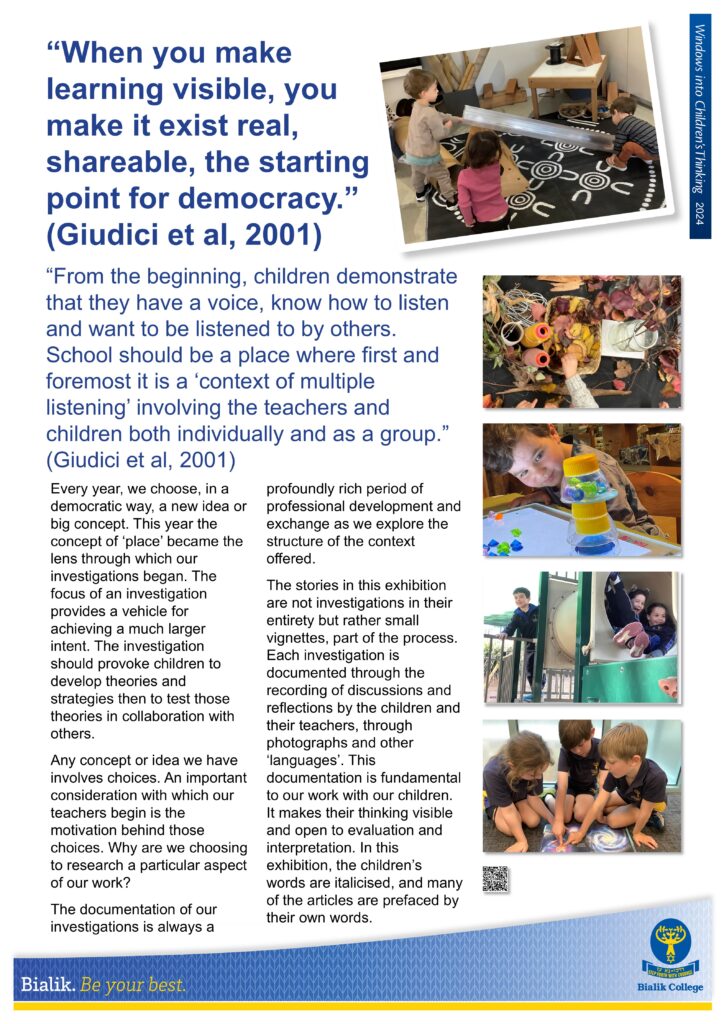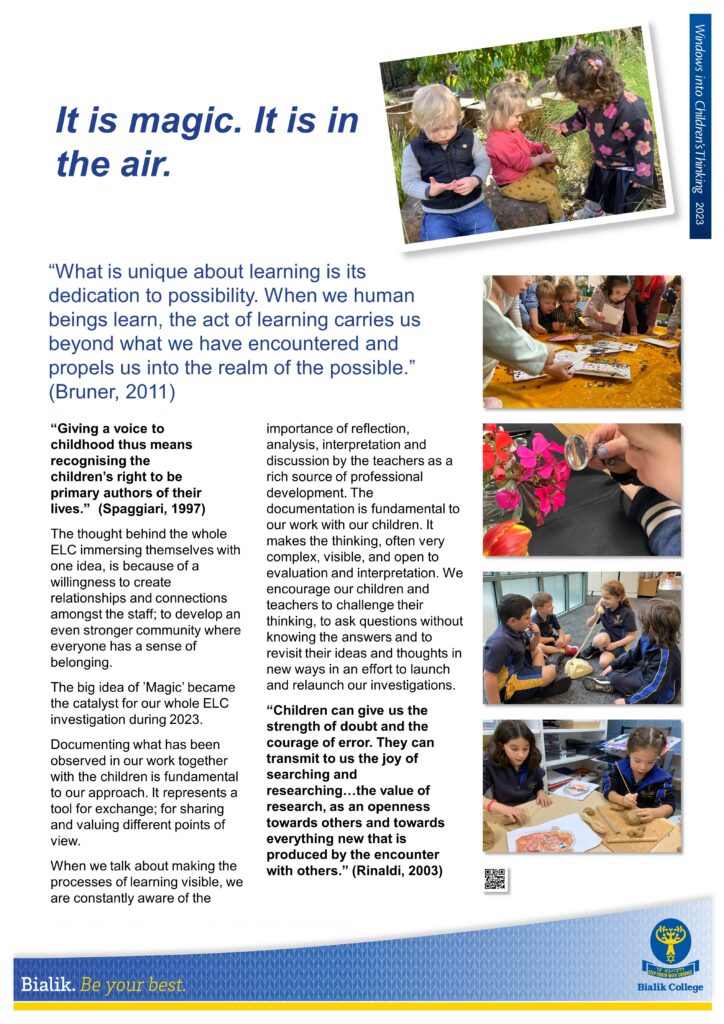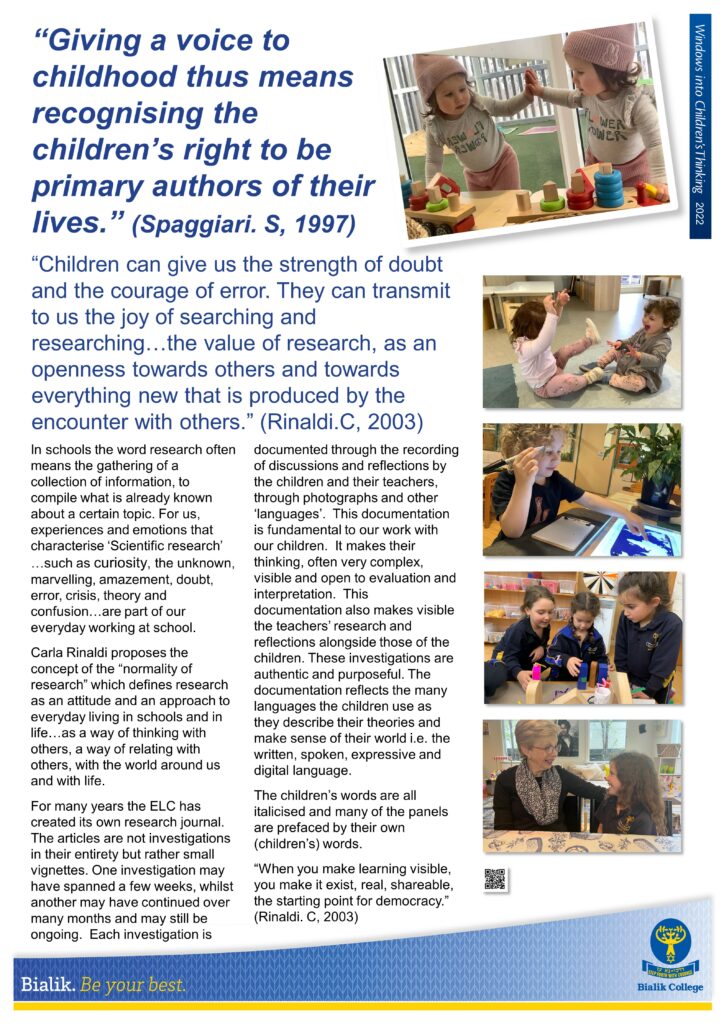What happens when we let children lead the way in how we see learning? This question sits at the heart of our Bialik Early Learning Centre (ELC) that includes our Childcare Centre and kindergarten, and our Junior primary initiative—not just as a teaching strategy, but as a philosophy that honours children’s voices, thinking, and agency. This year, we embarked on an ELC and Junior primary school-wide concept to explore ‘Visibility’ as a living concept, with each classroom developing its own research question based on the children’s thinking and understanding. Any concept or idea we have involves choices. An important consideration with which our educators begin is the motivation behind those choices.
For us visibility is more than just what could be seen with the eyes. It is a way of being in relationship—with each other, with ideas, with space, and with learning itself.
Ultimately, the focus on visibility transformed classrooms into living labs of curiosity, connection, and shared meaning-making. It challenged the traditional notion of teaching as transmission and reimagined school as a collaborative, ever-unfolding inquiry—guided by the children and teachers in an act of reciprocity.
Each classroom began by listening deeply—to children’s conversations, their drawings, their questions, and their fascinations. Documentation played a central role—not as a product, but as a process of reflection and relationship. Panels, conversations, and visual displays became invitations for others to join the inquiry. The walls, floors, and shared spaces echoed the children’s questions, hypotheses, and moments of discovery.
Carla Rinaldi proposes the concept of “the normality of research”1 which defines research as an attitude and an approach to everyday living in schools and in life… as a way of thinking for ourselves and thinking with others, a way of relating with others, with the world around us and with life.
The educators, too, became researchers—studying how children represent their thinking, how visibility fosters belonging, and how the environment can be designed to listen and respond.
What emerged from this collective journey was a deepened sense of connection—among classrooms, between families and educators, and most importantly, within the children themselves. They began to see themselves not just as learners, but as contributors to a shared dialogue of meaning.
The articles in our journal are not investigations in their entirety but rather small vignettes, part of the process. Each investigation is documented through the recording of discussions and reflections by the children and their teachers, through photographs and other ‘languages’. This documentation is fundamental to our work with our children. It makes their thinking, often very complex, visible and open to evaluation and interpretation.
Through the lens of visibility, we were reminded that every child carries a world within them. When we slow down, observe closely, and make space for their many languages of expression, we begin to see learning not just as something to measure, but as something to marvel at.
1 Rinaldi, C 2005, In dialogue with Reggio Emilia : listening, researching and learning, Routledge, London ; New York.
Click on the links below to access the classes:
BCC Aleph and Bet BCC Gimmel BCC Dalet
Kinder 3 Aleph Kinder 3 Bet Kinder 3 Gimmel
Kinder 4 Aleph Kinder 4 Bet Kinder 4 Gimmel
Prep Aleph Prep Bet Prep Gimmel
Year 1 Aleph Year 1 Bet Year 1 Gimmel



